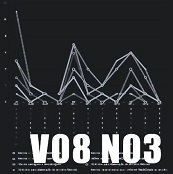Resumo
Este artigo tem como finalidade apresentar uma revisão sistemática da literatura, produzida nos últimos anos, a respeito do modo de transporte cicloviário, no que tange a intervenções no nível físico e político, diferenças entre o planejado e o executado, métodos e técnicas utilizadas para avaliação de estratégias de planejamento e a aproximação dessas estratégias com a realidade local. As pesquisas por trabalhos relacionados compreenderam tanto a literatura nacional quanto a internacional, considerando-se os anos de publicação entre 2000 e 2016. Ao fim de um extensivo processo de seleção, verificou-se que grande parte da produção e conhecimento técnico tem se direcionado a compreender o papel da infraestrutura na promoção do uso da bicicleta nas cidades, especialmente no que tange à condição essencial de segurança para atrair novos usuários. Muitos trabalhos dão ênfase à percepção dos usuários da bicicleta frente às intervenções adotadas, considerando seu potencial de atratividade, ou ainda abordando possíveis estratégias de planejamento para se chegar a uma rede considerada ideal, sobretudo no que diz respeito à prevenção de acidentes. Ainda que menos explorada, uma visão a respeito do pensamento político e técnico começa a ser traçada por pesquisadores, abordando as dificuldades para combinar o conhecimento técnico e científico aos desejos políticos.
Referências
AKIMURA, S. Transportation statistics that can contribute to policies and social infrastructure development aimed at ensuring the healthy growth of cities and providing support for smooth economic activity. International Association of Traffic and Safety Sciences, v. 39, p. 9-18, 2015. https://doi.org/10.1016/j.iatssr.2015.06.001.
BASU, S.; VASUDEVAN, V. Effect of bicycle friendly roadway infrastructure on bicycling activities in urban India. Procedia - Social and Behavioral Sciences, v. 104, p. 1139-1148, 2013. https://doi.org/10.1016/j.sbspro.2013.11.210.
CAVOLI, C. et al. Linking transport, health and sustainability: Better data sets for better policy-making. Journal of Transport & Health, v. 2, p. 111-119, 2015. https://doi.org/10.1016/j.jth.2014.08.001.
EUZÉBIO, R. M. G. L. O custo do caos - prejuízo ao bolso e ao meio ambiente - cidades não suportam mais o crescimento da frota de veículos. Desafios do Desenvolvimento - IPEA, v. 53, 2009. Disponível em : http://www.ipea.gov.br/desafios/. Acesso em: 29 de setembro de 2017.
FRADE, I.; RIBEIRO, A. Bicycle sharing systems demand. Procedia - Social and Behavioral Sciences, v. 111, p. 518-527, 2014. https://doi.org/10.1016/j.sbspro.2014.01.085.
GOEVERDEN, K. et al. Interventions in bicycle infrastructure, lessons from Dutch and Danish cases. Transportation Research Procedia, v. 10, p. 403-412, 2015. https://doi.org/10.1016/j.trpro.2015.09.090.
GONZALO-ORDEN, H. et al. Bikeways and cycling urban mobility. Procedia - Social and Behavioral Sciences, v. 160, p. 567-576, 2014. https://doi.org/10.1016/j.sbspro.2014.12.170.
GOODMAN, A.; SAHLQVIST, S.; OGILVIE, D. Who uses new walking and cycling infrastructure and how? Longitudinal results from the UK iConnect study. Preventive Medicine, v. 57, p. 518-524, 2013. https://doi.org/10.1016/j.ypmed.2013.07.007.
GRIŠKEVIČIŪTĖ-GEČIENĖ, A.; GRIŠKEVIČIENĖ, D. The influence of transport infrastructure development on sustainable living environment in Lithuania. Procedia Engineering, v. 134, p. 215-223, 2016. https://doi.org/10.1016/j.proeng.2016.01.062.
GUERREIRO, T. C. M, et al. Data-mining, GIS and multicriteria analysis in a comprehensive method for bicycle network planning and design. International Journal of Sustainable Transportation, v. 11, p. 1-13, 2017. http://dx.doi.org/10.1080/15568318.2017.1342156.
JONES, T.; AZEVEDO, L. N. Economic, social and cultural transformation and the role of the bicycle in Brazil. Journal of Transport Geography, v. 30, p. 208-219, 2013. https://doi.org/10.1016/j.jtrangeo.2013.02.005.
LIÑÁN, R. J. et al. Optimization of cycle paths with mathematical programming. Transportation Research Procedia, v. 3, p. 848-855, 2014. https://doi.org/10.1016/j.trpro.2014.10.062.
LITMAN, T. Evaluating active transport benefits and costs. Victoria Transport Institute, 2016. Disponível em: http://www.vtpi.org/. Acesso em 28 de setembro de 2017.
LYONS, G.; DAVIDSON, C. Guidance for transport planning and policymaking in the face of an uncertain future. Transportation Research, v. 88, p. 104-116, 2016. https://doi.org/10.1016/j.tra.2016.03.012.
MARQUÉS, R. et al. How infrastructure can promote cycling in cities: Lessons from Seville. Research in Transportation Economics, v. 53, p. 31-44, 2015. https://doi.org/10.1016/j.retrec.2015.10.017.
MITCHELL, D.; CLARIS, S.; EDGE, D. Human-centered mobility: a new approach to designing and improving our urban transport infrastructure. Engineering, v. 2, p. 33-36, 2016. https://doi.org/10.1016/J.ENG.2016.01.030.
NUÑEZ, J.Y.M.; RODRIGUES DA SILVA, A.N. Revisão sistemática da literatura com recursos de mineração de dados: uma aplicação em transportes. In: Congresso Nacional de Pesquisa em Transporte, 30, Rio de Janeiro. Anais ANPET. Rio de Janeiro, 2016, p. 2933-2944.
PANTER, J. et al. Impact of new transport infrastructure on walking, cycling, and physical activity. American Journal of Preventive Medicine, v. 50, p. 45-53. https://doi: 10.1016/j.amepre.2015.09.021.
PRINS, R.G. et al. Causal pathways linking environmental change with health behavior change: natural experimental study of new transport infrastructure and cycling to work. Preventive Medicine, v. 87, p. 175-182, 2016. https://doi.org/10.1016/j.ypmed.2016.02.042.
SILVA. A. et al. Multicriteria analysis for evaluation of bike lane routes integrated to public transportation. Procedia - Social and Behavioral Sciences, v.162, p. 388-397, 2014. https://doi.org/10.1016/j.sbspro.2014.12.220.
SOUSA, A. A.; SANCHES, S.; FERREIRA, M. A. G. Perception of barriers for the use of bicycles. Procedia - Social and Behavioral Sciences, v. 160, p. 304-313, 2014. https://doi.org/10.1016/j.sbspro.2014.12.142.
TENNØY, A. et al. How planners’ use and non-use of expert knowledge affect the goal achievement potential of plans: experiences from strategic land-use and transport planning processes in three Scandinavian cities. Progress in Planning, v.109, p. 1-32, 2015. https://doi.org/10.1016/j.progress.2015.05.002.
UN-HABITAT. Draft outcome document of the United Nations Conference on Housing and Sustainable Urban Development, Habitat III, Quito, 2016. Disponível em: http://habitat3.org/. Acesso em 26 de setembro de 2017.
WARREN, J. et al. Developing an equitable and sustainable mobility strategy for Havana. Cities, v. 45, p. 133-141, 2015. https://doi.org/10.1016/j.cities.2015.02.007.
WITHANAARACHCHI, J.; SETUNGE, S. Decision making on transport network planning and the impact on community, economy and the environment. Procedia Economics and Finance, v. 18, p. 882 - 891, 2014. https://doi.org/10.1016/S2212-5671(14)01014-4.
A PARC Pesquida em Arquitetura e Construção utiliza a licença do Creative Commons (CC), preservando assim, a integridade dos artigos em ambiente de acesso aberto.


